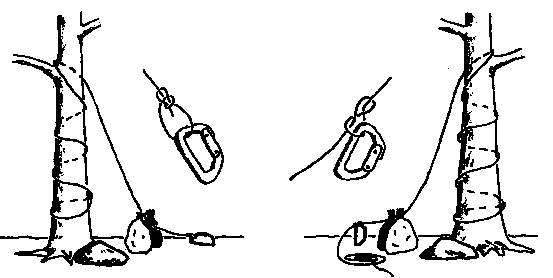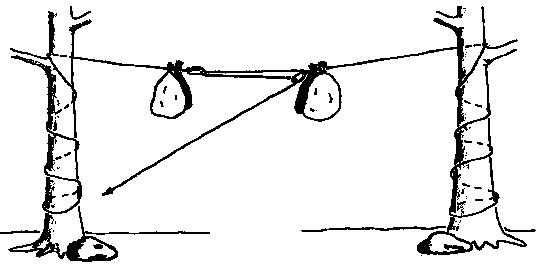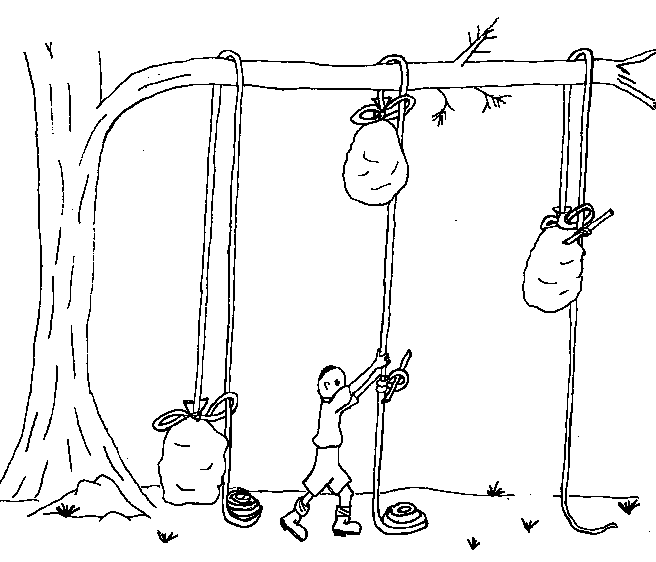
What follows are two methods of protecting food from hungry bears in the back country. It should be noted that neither of these is a panacea, because both of them require trees (in short supply in tundra country.) Neither can leaders of, say, 10-day trips count on getting a couple of hundred pounds or more of food stashed in steel bear boxes or airborne out of the reach of Mr. or Mrs. Bear.
So accept the methods, both of which have been used in the field successfully, for what they're worth. Be aware that leaving food at ground level may be hazardous to your health and food supply, and plan ahead for contingencies. Remember especially that any food storage method that relies on trees and ropes is at best a delaying tactic. Left unattended, any food storage system will fail and provide food to the bears. It is your responsibility to keep your food away from bears.
Food Bagging using the Ridone Two Rope, Double Carabiner Method
By Jean Ridone, Eugene, Oregon
A week-long trip with a dozen backpackers makes it difficult and often frustrating to hang food for protection against bears. Most often, "ideal" trees with long, high, sturdy branches are unavailable. Check the text and illustration below and you'll see how this method works. It does not require long branches, and puts the weight of the food right up against the tree trunk, where the limb is strongest.


[Your editor has used, and seen others use, Jean's method. And it works, albeit
with some difficulty. Jean also submits another technique which he calls...]
The San Diego One Rope, Small Quantity Food Hanging Method

Note that any tugging on the loose end of the rope will simply hoist the food bag higher. Brother bear will quickly tire of this game and move on.
(Even as you read this, unusually well-informed minds in our organization are hard at work devising alternatives that offer more security with less hassle, and will pass muster with agencies in the field. Stay tuned. Any other bear experiences or comments on the method devised by Jean or "someone in San Diego" are welcome.)